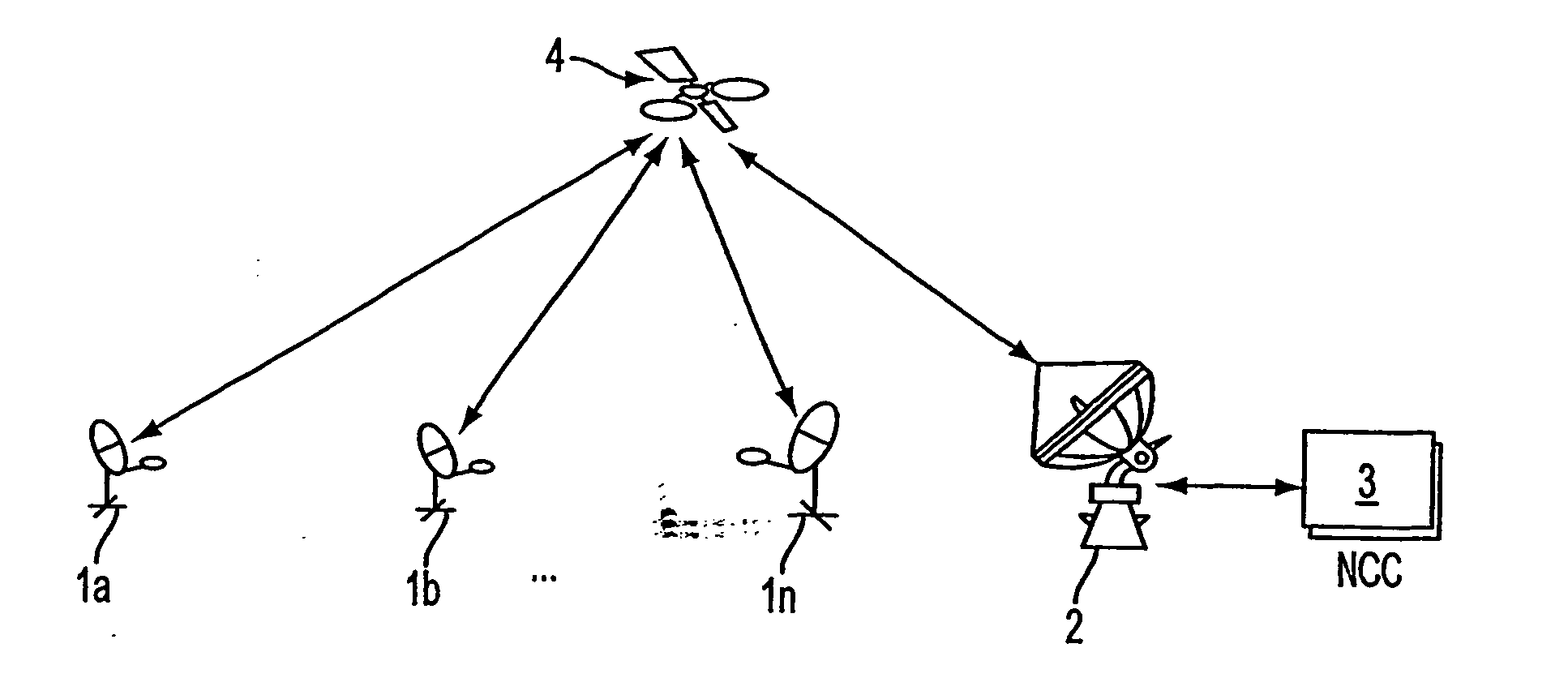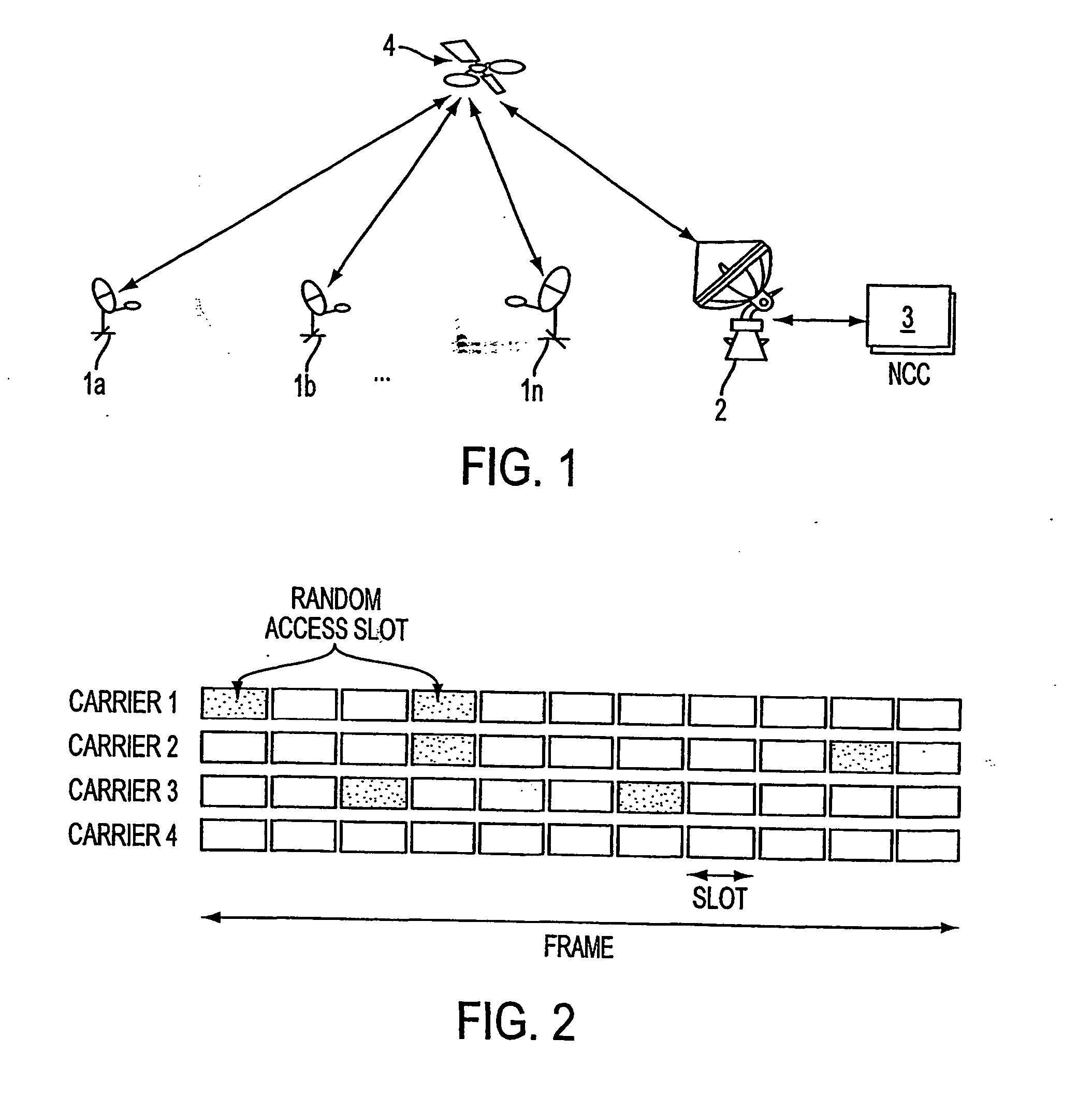Method for dynamic load management of random access shared communications channels
a technology of shared communications and dynamic load management, applied in the field of system and method for managing the dynamic load of random access channels, can solve problems such as data loss, computer program and system, and decline in the useful throughput of random access channels
- Summary
- Abstract
- Description
- Claims
- Application Information
AI Technical Summary
Benefits of technology
Problems solved by technology
Method used
Image
Examples
Embodiment Construction
[0020] Reference will now be made in detail to an illustrative, non-limiting embodiment of the present invention, examples of which are illustrated in the accompanying drawings. In the present invention, the terms are meant to have the definition provided in the specification, and are otherwise not limited by the specification.
[0021] The present invention includes networks having terminals, where each terminal receives its own random-access burst, as well as bursts of other terminals that share the random-access channel. On-board processing and routing satellites employ multiple geographic beams, and are configured to receive multiple messages in a contention channel burst. Each message is independently routed by the satellite, depending on destination address or virtual circuit identifier of the message. The present invention includes a method that uses the above-described. technique to send a random access channel control signal in each burst (e.g., a control message), that is mo...
PUM
 Login to View More
Login to View More Abstract
Description
Claims
Application Information
 Login to View More
Login to View More - R&D
- Intellectual Property
- Life Sciences
- Materials
- Tech Scout
- Unparalleled Data Quality
- Higher Quality Content
- 60% Fewer Hallucinations
Browse by: Latest US Patents, China's latest patents, Technical Efficacy Thesaurus, Application Domain, Technology Topic, Popular Technical Reports.
© 2025 PatSnap. All rights reserved.Legal|Privacy policy|Modern Slavery Act Transparency Statement|Sitemap|About US| Contact US: help@patsnap.com


